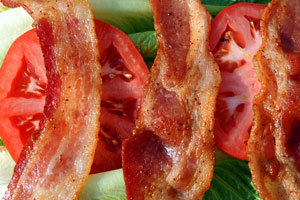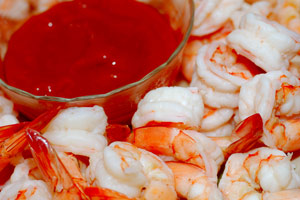Did You Know…
12/21/2007
Furci Home / Fitness Channel / Bullz-Eye Home
A column by Mike Furci that brings you research, trends and other info to help you with your fitness, health and nutritional needs.
 … according to Christopher Gardner, assistant professor at the Stanford University School of Medicine, who actually discourages the Atkins diet admits, “There’s something to the low-carb thing that’s intriguing. Cutting back drastically on simple carbohydrates is clearly a step in the right direction to helping people lose weight.” Gardner was the lead author in a major study reported in the “Journal of the American Medical Association” comparing four popular diets: LEARN, Atkins, Ornish and Zone. The study followed 311 premenopausal, nondiabetic, overweight/obese women for 12 months. Those following the Atkins diet lost more weight and experienced more favorable metabolic effects. Weight loss was not statistically different among the Zone, LEARN and Ornish groups.
… according to Christopher Gardner, assistant professor at the Stanford University School of Medicine, who actually discourages the Atkins diet admits, “There’s something to the low-carb thing that’s intriguing. Cutting back drastically on simple carbohydrates is clearly a step in the right direction to helping people lose weight.” Gardner was the lead author in a major study reported in the “Journal of the American Medical Association” comparing four popular diets: LEARN, Atkins, Ornish and Zone. The study followed 311 premenopausal, nondiabetic, overweight/obese women for 12 months. Those following the Atkins diet lost more weight and experienced more favorable metabolic effects. Weight loss was not statistically different among the Zone, LEARN and Ornish groups.
(Jama.amma-assn.org)
… researchers from the Karolinska Institute in Stockholm looked at the intake of whole, sour, medium and low-fat milk, as well as cheese and butter for 19,352 Swedish women 45 to 55 years old? Researchers report that a regular intake of whole milk, sour milk and cheese was inversely associated with weight gain. One daily serving of whole milk was associated with 15 percent less weight gain, while cheese was associated with 30 percent less weight gain (Amer Jour Clin Nut, 2007;84(6):1481-1488). (Wise Traditions, 2007;8(2):13)
… cancer is virtually unknown to the Hopi Indians of Arizona and the Hunza of Northern Pakistan, so long as they stay in the same environment? This strongly suggests something they are consuming is protecting them from cancer. The only significant difference is their water supply. The Hopi water is rich in rubidium and potassium, and the Hunza water is rich in cesium and potassium, making both water supplies rich with very caustically active metals. These minerals raise the pH levels in their bodies to 8.5, which is far above the normal 7.4 range. Cancer cells cannot survive in an alkaline environment, but thrive in an acidic environment, which is found in people that have developed cancer.
(Barefoot, Robert. The Calcium Factor. Deonna Enterprises, 2002)
 … health experts have been encouraging us to eat more fish for a good reason? Omega-3 in seafood has been found to have an inverse association with heart disease, stroke, cancer and arthritis, and is a powerful protector of the brain. Unfortunately, many types of seafood contain mercury, one of the most poisonous metals in existence. Some seafood is naturally low in mercury and is safer to eat. These include: clams, wild Alaskan salmon, shrimp, sardines, crabs and scallops. Some seafood high in mercury includes: Chilean sea bass, grouper, marlin, orange roughy, rockfish and Atlantic salmon. The EPA and FDA list four fish that should never be eaten: tilefish, shark, king mackerel and swordfish.
… health experts have been encouraging us to eat more fish for a good reason? Omega-3 in seafood has been found to have an inverse association with heart disease, stroke, cancer and arthritis, and is a powerful protector of the brain. Unfortunately, many types of seafood contain mercury, one of the most poisonous metals in existence. Some seafood is naturally low in mercury and is safer to eat. These include: clams, wild Alaskan salmon, shrimp, sardines, crabs and scallops. Some seafood high in mercury includes: Chilean sea bass, grouper, marlin, orange roughy, rockfish and Atlantic salmon. The EPA and FDA list four fish that should never be eaten: tilefish, shark, king mackerel and swordfish.
(NewsMax Health Tip)
… as much as 25 percent of the 1.3 million heart catheterizations performed each year have been shown in studies to be unnecessary? A study by an international team of cardiac imaging specialists, led by researchers at Johns Hopkins, concludes that 64-slice computer tomography (CT) scans of the heart and it’s surrounding arteries are almost as reliable and accurate as more invasive procedures to check for blockages. Researchers say the 64-slice CT will identify patients who need angioplasty or bypass surgery. These new scans produce pictures in 10 seconds, while heart catheterization takes between 30 and 40 minutes, and requires almost an hour for recovery. CT scans also have none of the complications of an invasive procedure like infection, heart attack and stroke.
(NewsMax.com Health Alerts)
Questions or comments? Send them to mike@bullz-eye.com.
You can follow us on Twitter and Facebook for content updates. Also, sign up for our email list for weekly updates and check us out on Google+ as well.







